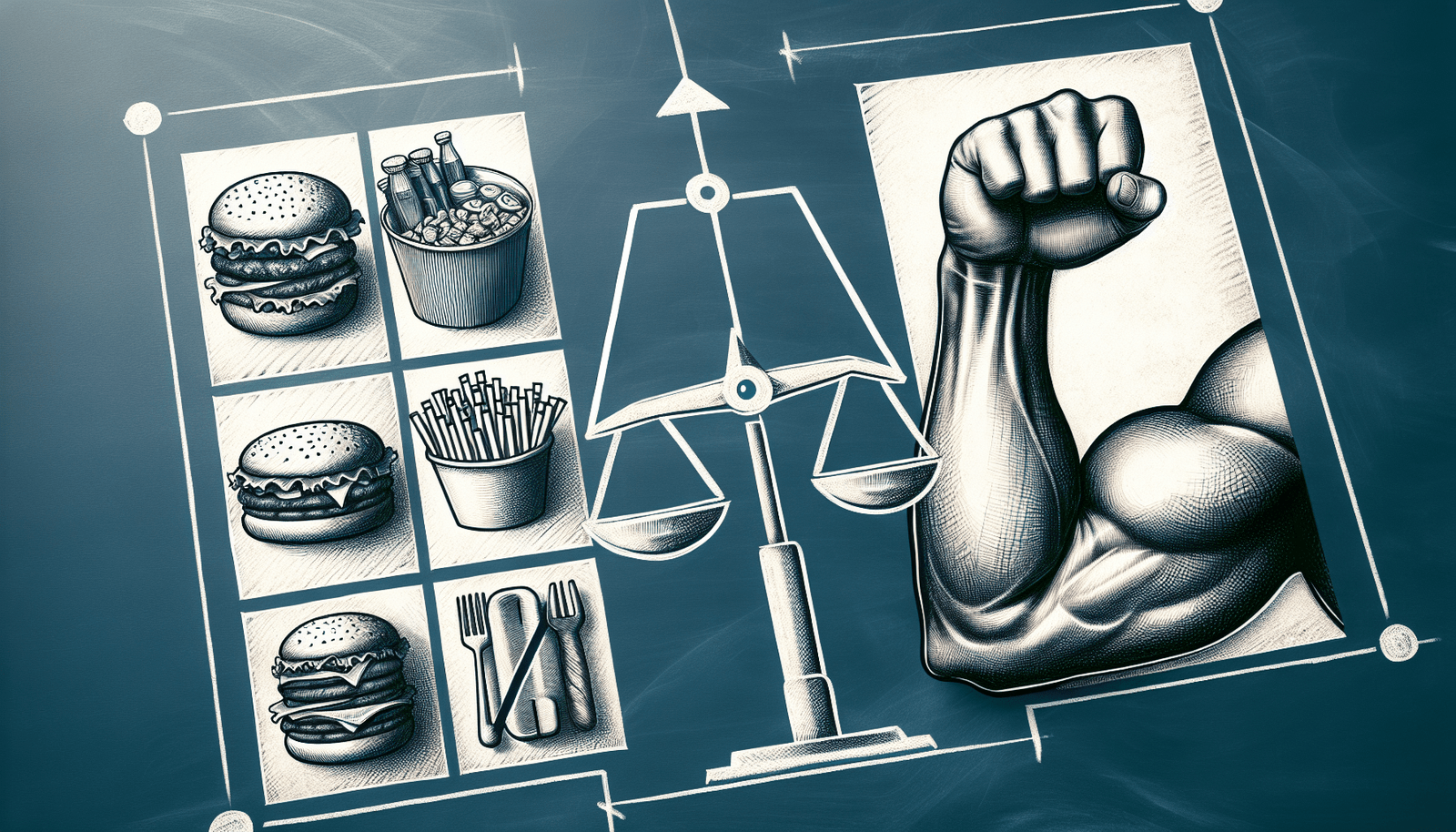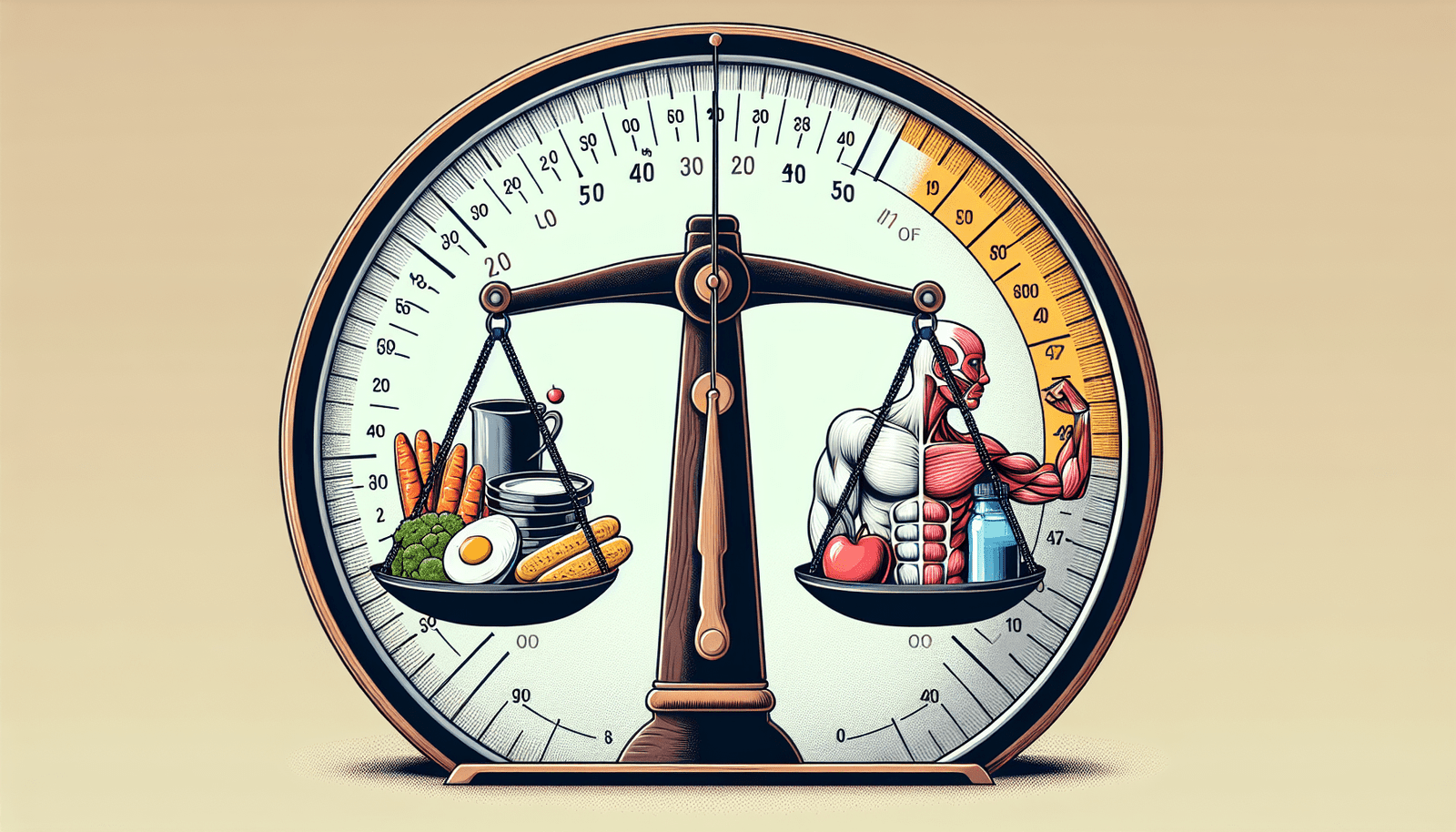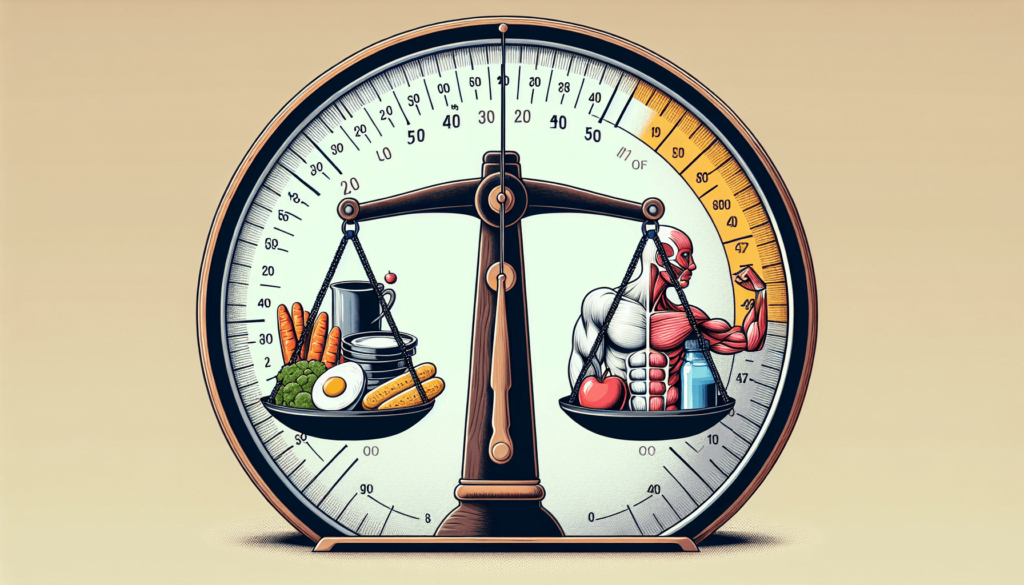So you’ve probably heard about fasting being a popular trend for weight loss and overall health improvement, but what about its impact on muscle loss? In this article, we will uncover the truth about fasting and how it affects your muscle mass. Whether you’re considering intermittent fasting or prolonged fasting, it’s important to understand the potential consequences it may have on your hard-earned muscle gains. Let’s separate fact from fiction and discover if fasting truly contributes to muscle loss or if there’s more to the story.

What is fasting?
Fasting refers to the act of voluntarily abstaining from food or certain types of food for a specific period of time. It has been practiced for centuries for various reasons, including religious, spiritual, and health purposes. Fasting can take different forms and durations, ranging from short-term fasts to extended fasting periods that extend for several days or even weeks.
Definition of fasting
Fasting can be defined as the deliberate restriction of calorie intake or complete abstinence from food and, in some cases, liquids for a designated period. It involves a controlled period of time during which the body does not receive its regular energy source from food, leading to physiological changes and metabolic adaptations.
Different types of fasting
There are several popular types of fasting that individuals may choose to follow, each with its unique approach and rules. Some common types include:
- Intermittent fasting: This involves alternating periods of eating and fasting, typically on a daily or weekly basis. Popular methods include the 16/8 method (16 hours of fasting followed by an 8-hour eating window) or the 5:2 method (five days of regular eating and two days of restricted caloric intake).
- Extended fasting: This refers to fasting for longer durations, typically lasting more than 24 hours and extending up to several days or weeks. Extended fasting may involve consuming only water or other non-caloric beverages.
Muscle loss during fasting
Muscle loss during fasting is a common concern among individuals who are considering or practicing fasting as part of their routine. To understand the impact of fasting on muscle loss, it is crucial to delve into the role of protein in muscle growth and maintenance.
The role of protein in muscle growth and maintenance
Protein plays a vital role in muscle growth and maintenance. Muscles are largely made up of protein fibers, and their repair and growth depend on an adequate supply of protein. Protein is made up of amino acids, which are the building blocks of muscle tissue. Consuming enough protein, and ensuring a balanced intake of essential amino acids, is essential for muscle repair, synthesis, and overall maintenance.
Effect of fasting on protein synthesis
During fasting, the body undergoes several physiological changes to conserve energy and maintain essential functions. One of these changes includes a decrease in protein synthesis, the process by which new proteins are created in the body. Fasting can lead to a decrease in the availability of amino acids, impairing the body’s ability to build and repair muscle tissue.
Impact of fasting on muscle loss
Extended periods of fasting, especially those lasting for several days or more, can result in muscle loss. When the body does not receive an adequate supply of protein and essential amino acids, it may turn to muscle tissue as a source of energy. As a result, the body breaks down muscle proteins, leading to muscle wasting. Additionally, the decrease in muscle protein synthesis during fasting further contributes to muscle loss.
Intermittent fasting and muscle loss
Intermittent fasting has gained popularity for its potential health benefits and versatility. It involves cycling between periods of fasting and eating, allowing individuals to maintain a regular eating pattern while still experiencing the benefits of fasting.
Understanding intermittent fasting
Intermittent fasting typically involves alternating periods of fasting, often lasting between 12 and 24 hours, with periods of regular eating. This approach can take various forms, such as the 16/8 method, where individuals fast for 16 hours and have an 8-hour window for eating. The idea behind intermittent fasting is to create a calorie deficit by restricting the eating window, leading to beneficial metabolic adaptations.
Studies on muscle loss during intermittent fasting
Research on the impact of intermittent fasting on muscle loss is limited but generally suggests that it may help preserve muscle mass. A study published in the Journal of Translational Medicine found that alternate-day fasting, a form of intermittent fasting, did not significantly affect muscle mass in obese adults. Additionally, a study published in the Journal of the International Society of Sports Nutrition reported that intermittent fasting combined with resistance training may promote muscle gain and fat loss simultaneously.
Preserving muscle mass while intermittent fasting
To minimize muscle loss during intermittent fasting, it is essential to prioritize protein intake and engage in regular resistance training. Consuming an adequate amount of protein during the eating window can help provide the necessary amino acids for muscle repair and growth. Additionally, engaging in resistance training exercises during non-fasting periods can stimulate muscle protein synthesis and counteract muscle loss.
Extended fasting and muscle loss
Extended fasting refers to fasting for periods lasting beyond 24 hours, ranging from several days to weeks. While these extended fasting periods can offer unique health benefits, there is a concern regarding potential muscle loss.
Extended fasting periods and muscle loss
During extended fasting, the body experiences a significant decrease in calorie intake and must turn to alternative energy sources to meet its energy demands. With limited dietary protein intake, the body may start breaking down muscle tissue to provide amino acids for energy production. As a result, muscle loss can occur during prolonged fasting periods.
Effect of prolonged fasting on muscle protein breakdown
Research on prolonged fasting and its impact on muscle protein breakdown is limited, but available evidence suggests that muscle protein breakdown increases with prolonged fasting. A study published in the American Journal of Clinical Nutrition found that extended fasting led to increased rates of muscle protein breakdown compared to periods of regular calorie intake.
Strategies to minimize muscle loss during extended fasting
If muscle preservation is a primary concern during extended fasting, there are strategies that can be implemented to minimize muscle loss. Prioritizing protein intake during the refeeding period can help replenish amino acid stores and support muscle repair. It is also advisable to engage in resistance training exercises after the fasting period to stimulate muscle protein synthesis and prevent muscle atrophy.

Role of exercise during fasting
Combining exercise with fasting is a topic of interest for individuals aiming to maximize their health and fitness goals. Understanding the potential impacts of exercise on muscle preservation during fasting is essential.
Combining exercise and fasting
Exercise during fasting can have unique effects on the body, as the absence of readily available energy from food may require the body to tap into alternative energy sources. By combining exercise and fasting, individuals may potentially enhance their fat-burning capabilities and improve overall body composition.
Effect of resistance training during fasting
Resistance training, which involves exercises that work against external resistance, such as weightlifting, can be particularly beneficial during fasting. Engaging in resistance training triggers muscle protein synthesis and can help counteract any muscle loss that may occur during fasting. However, it is important to note that intense exercise during fasting can increase the risk of muscle catabolism, so listening to your body and adjusting intensity accordingly is crucial.
Timing of exercise and nutrient intake
When combining exercise with fasting, paying attention to the timing of exercise and nutrient intake becomes important. Some individuals may prefer to exercise during their eating window to ensure adequate fueling before and after workouts. Others may choose to exercise during the fasting period, relying on stored energy sources for fuel. Experimenting with different approaches and noting how your body responds can help determine the best timing for exercise during fasting.
Protein requirements during fasting
Protein intake during fasting plays a critical role in maintaining muscle mass and minimizing muscle loss. Understanding the importance of protein and recommended intake levels is essential.
Importance of protein intake during fasting
Protein is essential for muscle health, repair, and growth, making it crucial during fasting periods. It provides the necessary amino acids for muscle protein synthesis and helps minimize muscle breakdown. Inadequate protein intake during fasting can lead to increased muscle loss and hinder muscle recovery.
Recommended protein intake during fasting
The recommended protein intake during fasting varies depending on factors such as age, gender, body composition, and activity level. However, a general guideline for protein intake during fasting is to consume around 1.6 to 2.2 grams of protein per kilogram of body weight per day. This range can help ensure sufficient amino acid availability for muscle protein synthesis and maintenance.
Best sources of protein during fasting
When selecting protein sources during fasting, it is beneficial to choose lean and nutrient-dense options. Some excellent sources of protein include lean meats, poultry, fish, eggs, dairy products, legumes, and plant-based protein sources like tofu and tempeh. Adding a variety of protein sources to your diet can help ensure a balanced intake of essential amino acids.
Maintaining muscle mass while fasting
Minimizing muscle loss while fasting requires a combination of strategies that focus on both nutrition and exercise. Implementing these strategies can help preserve muscle mass and optimize muscle-building potential.
Strategies to minimize muscle loss during fasting
To minimize muscle loss during fasting, it is crucial to prioritize protein intake, engage in regular resistance training, and ensure adequate nutrient intake. Consuming high-quality protein sources during the eating window can support muscle repair and synthesis. Additionally, participating in resistance training exercises during fasting periods or shortly after can stimulate muscle protein synthesis and help preserve muscle mass.
Importance of calorie and nutrient balance
Maintaining a calorie and nutrient balance is essential for maintaining muscle mass while fasting. While it may be tempting to restrict calories further during fasting periods, doing so excessively can lead to increased muscle breakdown. It is important to strike a balance between creating a calorie deficit for weight loss goals and providing enough energy and nutrients to support muscle preservation.
Refocusing on muscle-building after fasting
After a fasting period, it is important to refocus on muscle-building to optimize gains and minimize any potential muscle loss. Gradually increasing caloric intake and protein consumption, while also implementing a well-rounded exercise routine, can help rebuild and strengthen muscle tissue. Giving the body ample time to recover and adapt to new stimuli is crucial for achieving muscle-building goals post-fasting.
Fasting for weight loss vs. muscle preservation
Finding the right balance between weight loss and muscle preservation is a common concern for individuals practicing fasting. Understanding the impact of calorie deficit on muscle loss can help navigate this delicate balance.
Balancing weight loss and muscle preservation goals
While fasting can be an effective tool for weight loss, it is important to consider the potential impact on muscle preservation. Rapid and excessive weight loss, often achieved through severe calorie restriction, can lead to increased muscle catabolism. Balancing a moderate calorie deficit with adequate protein intake and exercise can help minimize muscle loss while still achieving weight loss goals.
Impact of calorie deficit on muscle loss
A significant calorie deficit can lead to the breakdown of muscle protein for energy, resulting in muscle loss. When the body does not receive enough calories to sustain its energy needs, it may resort to breaking down muscle tissue. It is essential to strike a balance between creating a calorie deficit for weight loss and providing adequate nutrients to support muscle health.
Combining fasting with other strategies for muscle preservation
Combining fasting with other strategies for muscle preservation can enhance the overall effectiveness and success of your journey. This may include regular resistance training to stimulate muscle protein synthesis, consuming sufficient protein to support muscle repair, and ensuring adequate rest and recovery periods. Customizing your approach to fasting and incorporating individualized strategies can optimize both weight loss and muscle preservation goals.
Fasting as a tool for fat loss and body composition
Fasting has gained popularity as a tool for fat loss and improving body composition. Understanding the effectiveness of fasting for fat loss and its impact on body composition is essential.
Effectiveness of fasting for fat loss
Fasting can be an effective strategy for fat loss due to its ability to create a calorie deficit and improve metabolic efficiency. By restricting the eating window or calorie intake during fasting periods, individuals can achieve a negative energy balance, leading to fat loss. Additionally, fasting may enhance fat burning by promoting favorable hormonal responses and improving insulin sensitivity.
Impacts of fasting on body composition
While fasting can contribute to fat loss, its impact on body composition depends on various factors such as protein intake, exercise, and individual characteristics. With adequate protein consumption and resistance training, fasting can help preserve lean muscle mass while promoting fat loss. Improving body composition involves reducing body fat percentage while maintaining or increasing muscle mass.
Importance of individual variation and monitoring
It is crucial to recognize that individual responses to fasting can vary. Some individuals may experience significant fat loss and muscle preservation, while others may need to adjust their approach based on their unique physiology and goals. Monitoring progress, body composition changes, and overall well-being can help tailor fasting practices to individual needs and optimize results.
Conclusion
Fasting has become a popular practice for various health and wellness goals, including weight loss and body composition improvements. While concerns about muscle loss during fasting exist, incorporating specific strategies can help minimize muscle loss and optimize muscle preservation. Prioritizing protein intake, engaging in resistance training exercises, and balancing calorie deficits are key factors to consider. Individual factors and goals should also be considered when implementing fasting practices to ensure desired outcomes. By understanding the role of protein, exercise, and personalized approaches, individuals can effectively combine fasting and muscle preservation for optimal results.







